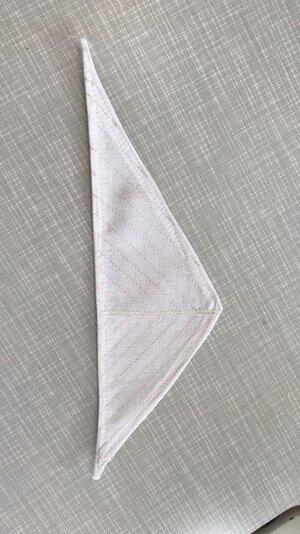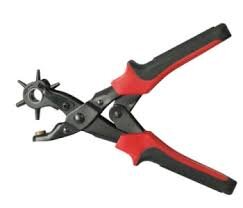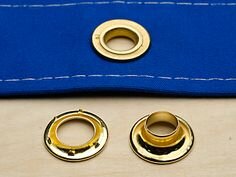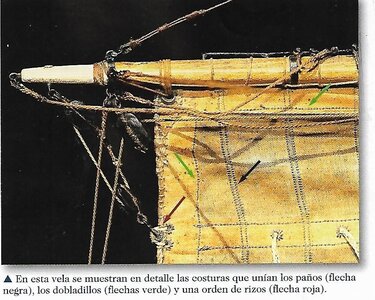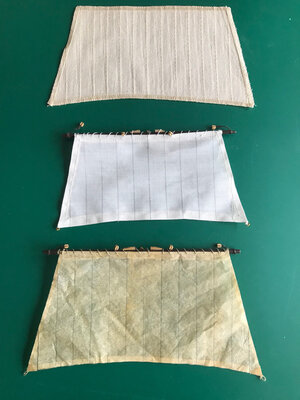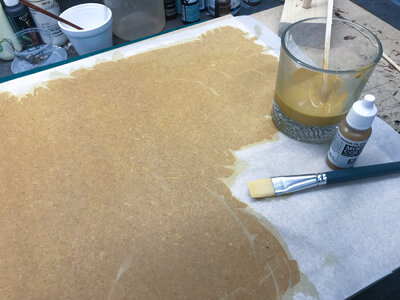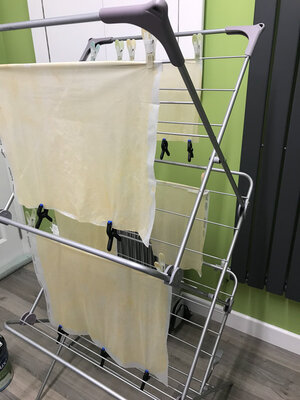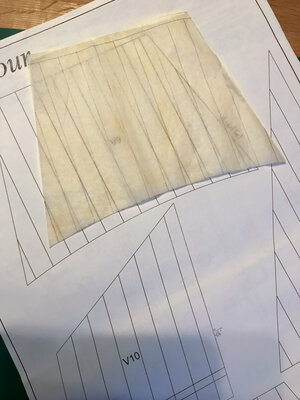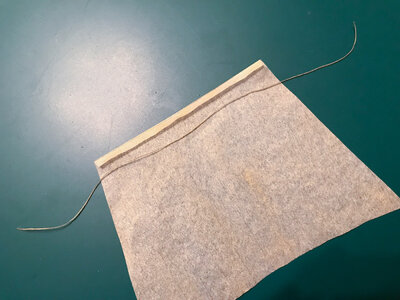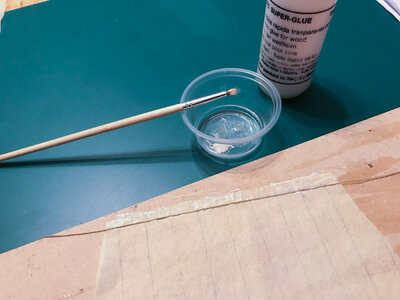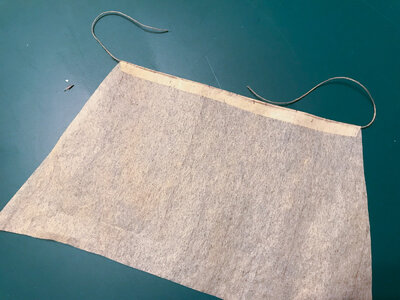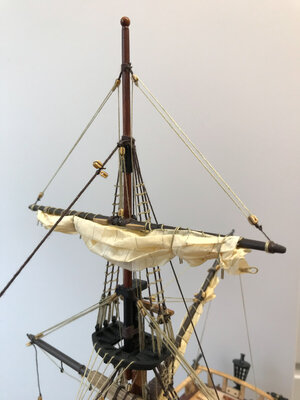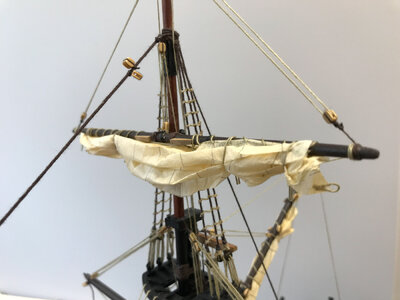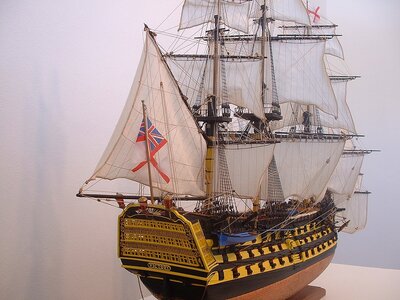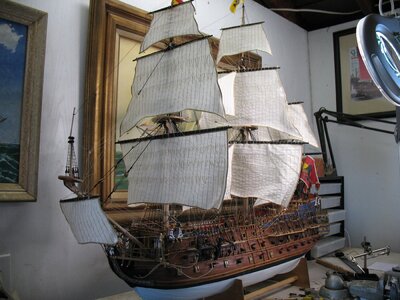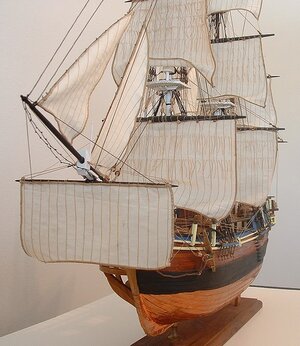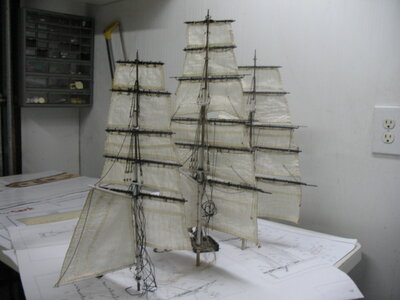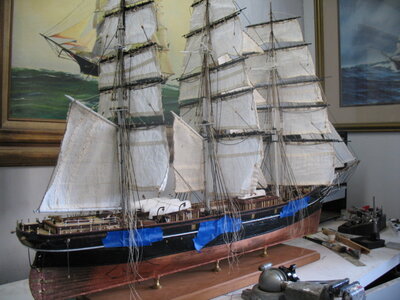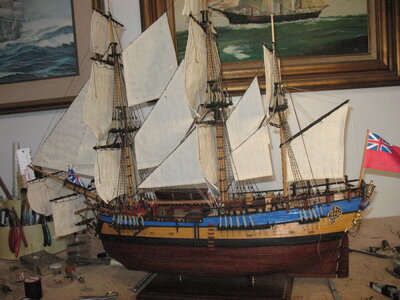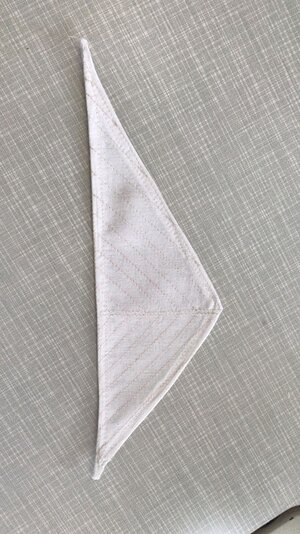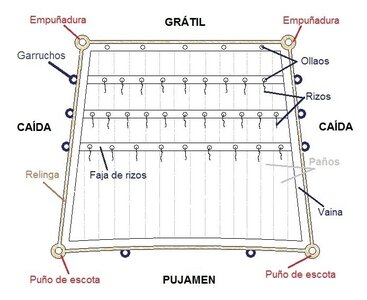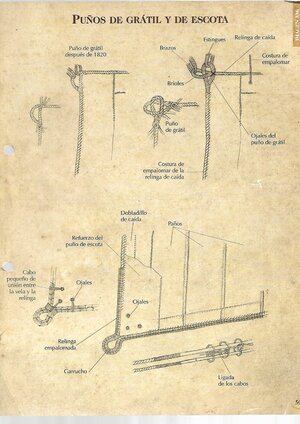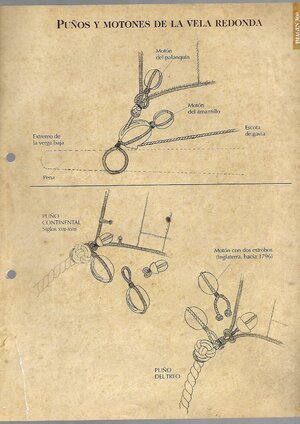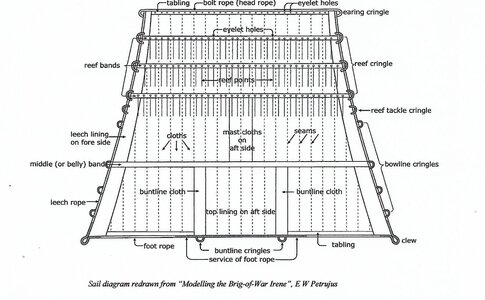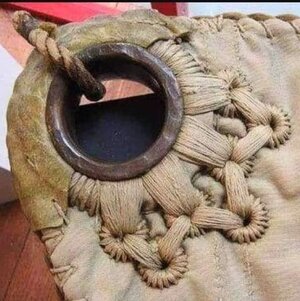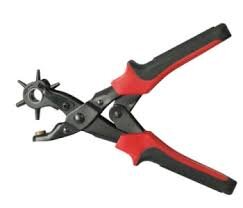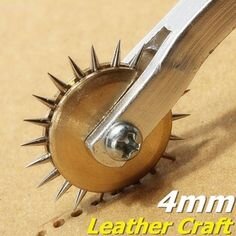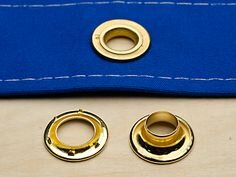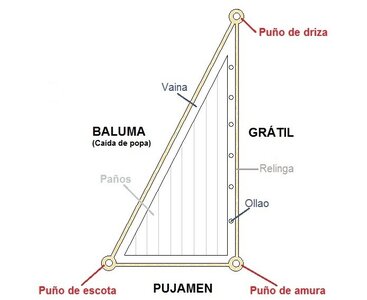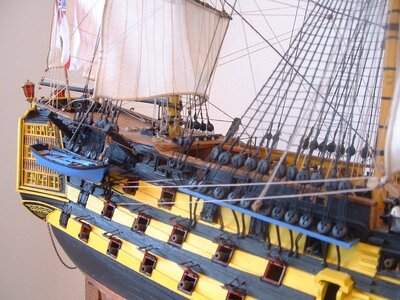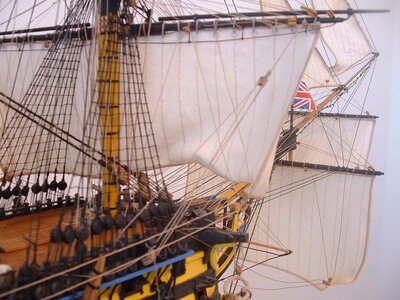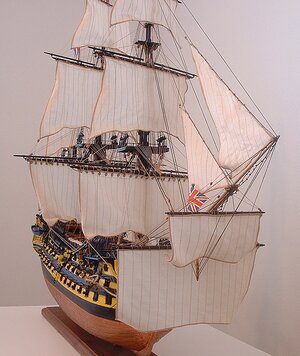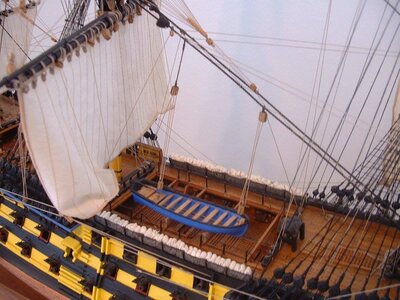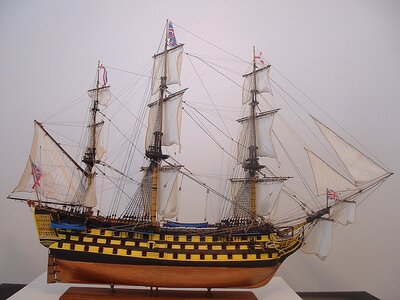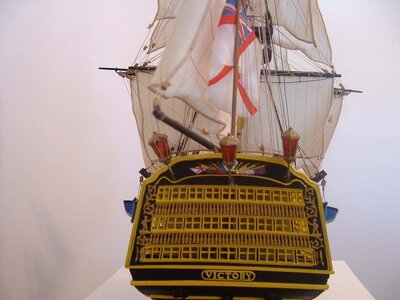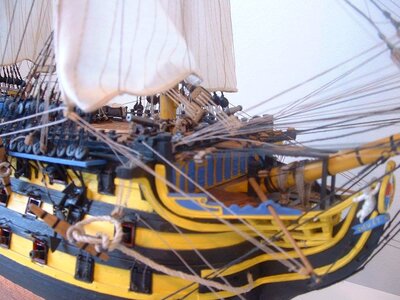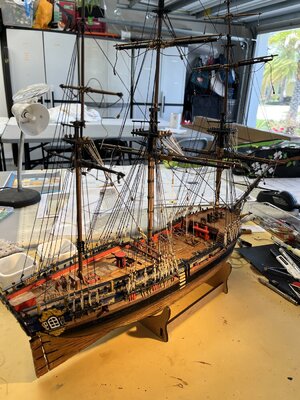- Joined
- Dec 30, 2021
- Messages
- 278
- Points
- 278

Mmmm, It is a testing subject. As many have said, sails can make or break a model. Getting the right weight, sewing the right seams (or marking them for smaller scales); if the sail isn't correct in its shape and accoutrements then it just looks wrong and now one will look at the ship.
Weight is a real issue. In scale they need to be very light indeed, but not so light that they are see through and then the perennial discourse on colour; well they were never white even when new and invariably never a single colour as each sail was made up a a number of canvas elements sewn together with double and triple thicknesses at seams and reinforcements.
Of course there is also the other issue to consider. You almost double the rigging when you add sails. Bow, Leech, Clew, Bunt lines, brails and perhaps even reef tackle all have to be added once sails are added to the ship.
Then do you billow sails or to let them be limp; there's the problem of getting the sheets and tacks tight on billowing sails...
All things to be considered when making the decision.
So my recommendation for what its worth: make a practice mast with main yard on a flat board and rig it with standing and running rigging, then add sails made to the best of your ability (perhaps cut and sewn to fit your model) and see how you go with it and the rest of the rigging before committing it to your model.
Weight is a real issue. In scale they need to be very light indeed, but not so light that they are see through and then the perennial discourse on colour; well they were never white even when new and invariably never a single colour as each sail was made up a a number of canvas elements sewn together with double and triple thicknesses at seams and reinforcements.
Of course there is also the other issue to consider. You almost double the rigging when you add sails. Bow, Leech, Clew, Bunt lines, brails and perhaps even reef tackle all have to be added once sails are added to the ship.
Then do you billow sails or to let them be limp; there's the problem of getting the sheets and tacks tight on billowing sails...
All things to be considered when making the decision.
So my recommendation for what its worth: make a practice mast with main yard on a flat board and rig it with standing and running rigging, then add sails made to the best of your ability (perhaps cut and sewn to fit your model) and see how you go with it and the rest of the rigging before committing it to your model.



